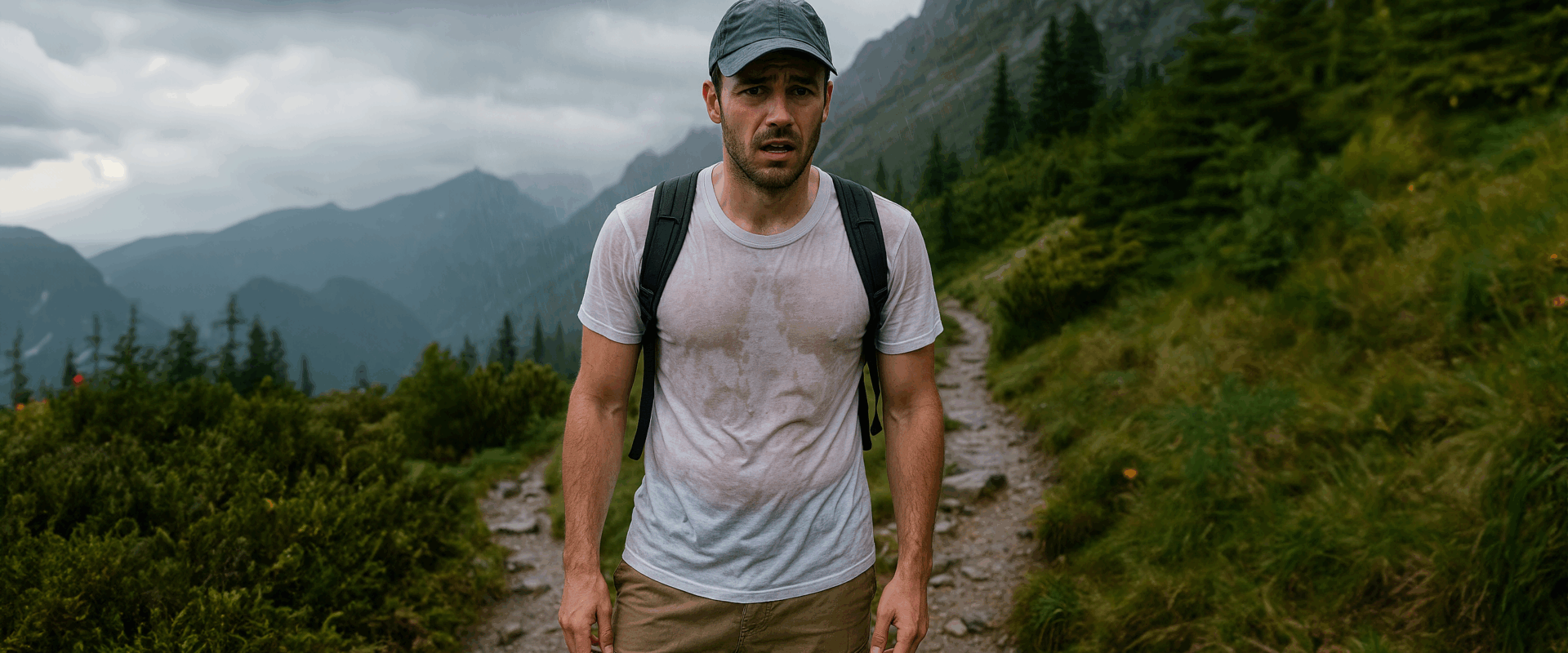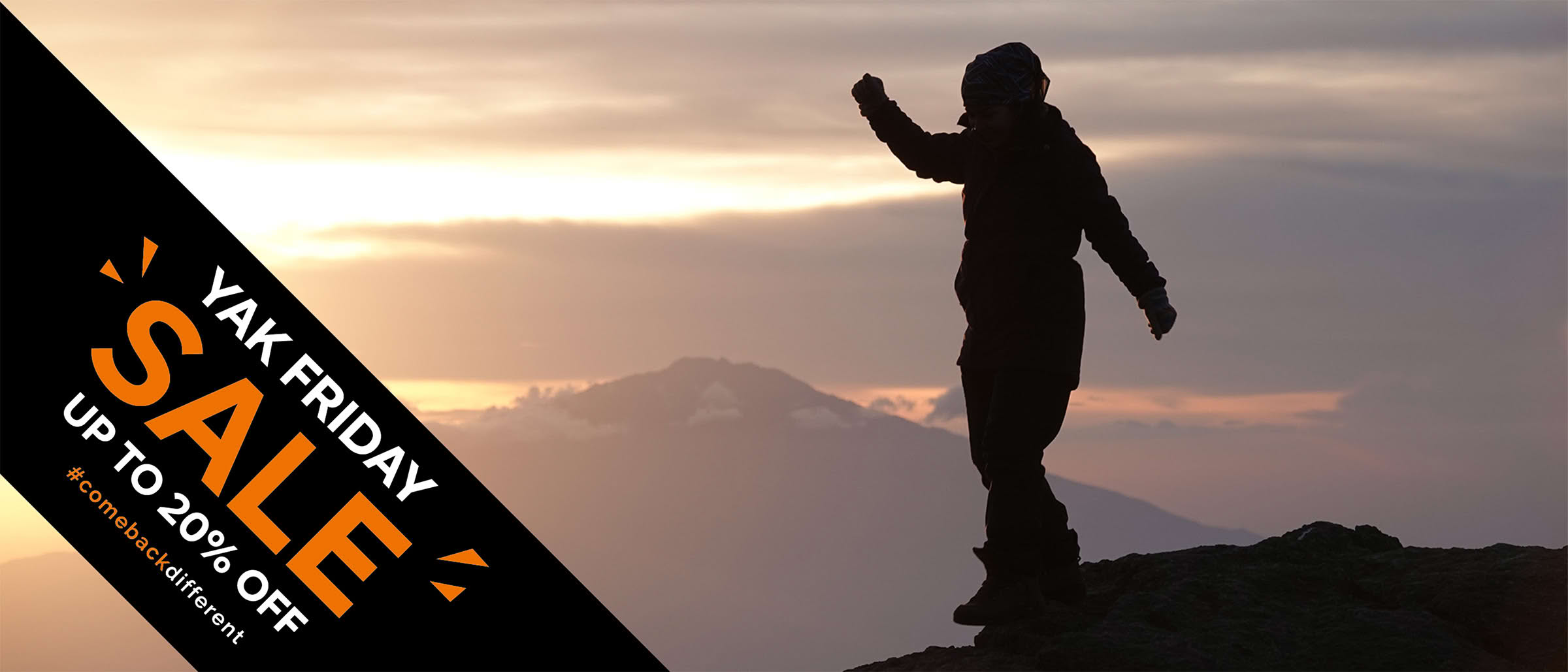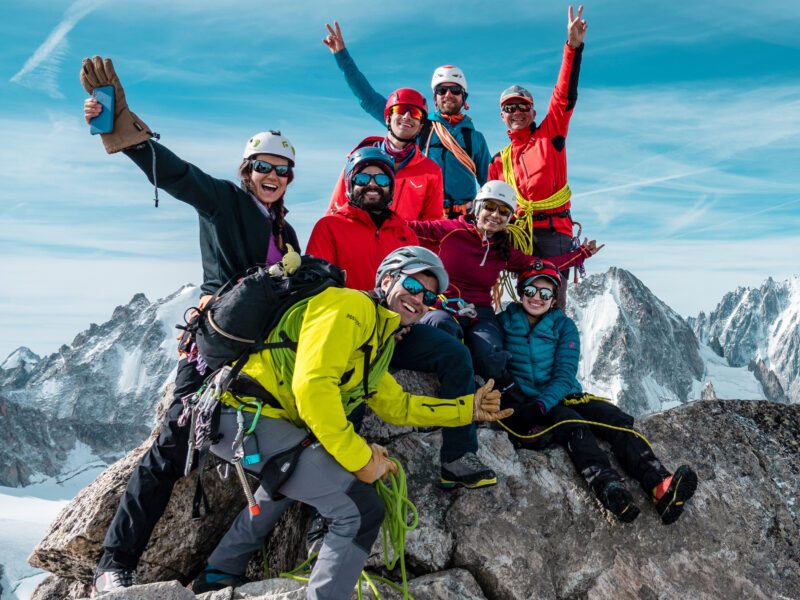BY Rami Rasamny | September 18 2025
Why is Cotton Bad for Hiking? The Essential Guide for Hikers

By Rami Rasamny, Founder of Life Happens Outdoors
When you set out on a hike or trek, every decision you make matters: the route you choose, the gear you pack, the food you bring, and especially the clothes you wear.
Many beginners reach for a comfortable cotton t-shirt or hoodie without a second thought. After all, cotton feels soft, breathable, and familiar. But in the world of hiking, cotton can be one of the most dangerous choices you make.
At Life Happens Outdoors, we have guided thousands of hikers and trekkers across some of the most beautiful and challenging terrains in the world. Over and over, we have seen how wearing cotton can ruin an experience or even create a dangerous situation.
If you want to stay comfortable, safe, and fully immersed in your adventure, it is crucial to understand why cotton is bad for hiking and what fabrics you should wear instead.
Why Cotton is a Poor Choice for Hiking Clothing
Cotton Absorbs and Retains Moisture
The biggest reason to avoid cotton when hiking is that it absorbs moisture like a sponge and holds onto it. Sweat, rain, or even morning dew can soak into cotton and stay there for hours or even days.
Unlike modern moisture-wicking fabrics, cotton dries very slowly. That means you will be stuck in wet, heavy clothing for most of your hike.
When your body cools down after physical activity, wet clothes pull heat away from your skin. In cold or windy weather, this can quickly lead to hypothermia, a serious and potentially life-threatening condition.
Key takeaway: Staying dry is vital for comfort and safety. Cotton works against you by trapping moisture instead of letting it evaporate.
Chafing and Discomfort on the Trail
Hiking involves repetitive movement step after step, mile after mile. If your clothes do not move smoothly with your body, friction builds up.
When cotton gets wet, it becomes heavy and clingy, sticking to your skin and rubbing with every motion. This often leads to painful chafing, particularly in areas like:
- Inner thighs
- Underarms
- Shoulders
- Feet (especially with cotton socks)
A great hike should leave you with beautiful memories and maybe some tired muscles, not raw, irritated skin that makes every movement painful.
Cotton Offers No Temperature Regulation
Hiking conditions can change in an instant. A sunny morning can quickly turn into a windy afternoon or a sudden downpour.
Cotton provides no insulation when wet, and it does not regulate temperature well. This makes it a poor choice in both hot and cold environments:
- Cold weather: Wet cotton accelerates heat loss, increasing your risk of hypothermia.
- Hot weather: Cotton traps sweat and heat, making you overheat faster.
In contrast, moisture-wicking fabrics like merino wool, polyester, and nylon actively move sweat away from your skin, keeping you comfortable in a wide range of conditions.
The Best Alternative: Moisture-Wicking Fabrics
Modern hiking gear uses moisture-wicking materials that are designed to keep you dry, regulate temperature, and prevent discomfort.
These fabrics work by drawing sweat away from your skin and spreading it across the outer surface of the material, where it evaporates quickly.
Top Choices for Hiking Clothing
- Merino Wool – Naturally odor resistant, breathable, and warm even when wet. Ideal for base layers and socks.
- Polyester and Nylon Blends – Lightweight, quick drying, and perfect for hiking shirts and pants.
- Technical Synthetics – Engineered fabrics that combine stretch, breathability, and durability for high performance trekking.
Moisture-wicking clothing is also lightweight and packable, making it easy to bring multiple layers on longer treks.
How to Dress for Hiking: The Layering System
Choosing the right fabric is important, but knowing how to layer your hiking clothes is equally crucial. At Life Happens Outdoors, we teach our hikers the three layer system:
- Base Layer:
Worn directly against your skin. Its job is to wick moisture away.
Best material: Merino wool or synthetic blends. Never cotton. - Mid Layer:
Provides insulation to keep you warm.
Best material: Fleece, lightweight down, or synthetic insulated jackets. - Outer Layer:
Protects against wind and rain while allowing moisture to escape.
Best material: Waterproof and breathable shell jackets.
This system keeps you adaptable as the weather changes throughout your hike.
The Golden Rule: Cotton Kills
There is a common saying among experienced hikers and mountaineers: “Cotton kills.”
It might sound dramatic, but it reflects a serious truth. If you get caught in cold, wet conditions wearing cotton, your core temperature can plummet dangerously fast.
We have guided teams through environments as diverse as the humid jungles of Sri Lanka, the snowy peaks of the Alps, and the high altitude trails of the Himalayas. No matter where you hike, one rule always applies: leave cotton at home.
Why the Right Clothing Makes the Experience Better
The right hiking clothes are not about looking professional or trendy. They are about comfort, safety, and focus.
When you are warm, dry, and free from chafing, you can concentrate on the beauty around you—the mountain views, the trail ahead, and the shared experience with your team.
At Life Happens Outdoors, our mission is to help people Come Back Different through transformative outdoor experiences. That transformation starts long before you reach the summit. It begins the moment you pack your bag and make choices that set you up for success.
Choosing moisture-wicking fabrics over cotton may seem like a small detail, but it can make or break your adventure.
Final Advice: Pack Smart, Hike Smart
Before you head out on your next hike or trek, take a moment to check your clothing. If you see cotton t-shirts, sweatpants, or socks in your pack, swap them out for moisture-wicking gear.
Your body will stay drier, you will avoid chafing, and you will reduce your risk of hypothermia or heat stress. Most importantly, you will be free to focus on the adventure itself, rather than battling discomfort or danger.
Hiking should be about connecting with nature, pushing your limits, and discovering something new about yourself, not suffering because of poor clothing choices. Leave cotton behind and step into the wild with confidence.
About The Author
Rami Rasamny is the founder of Life Happens Outdoors, a premium adventure travel community dedicated to transforming lives through curated outdoor experiences. A mountaineer and entrepreneur, Rami has led teams on some of the world’s most challenging peaks, from the Alps to the Himalayas. His mission is to make adventure accessible, transformative, and safe for all who seek to push their limits and Come Back Different.
About Life Happens Outdoors
At Life Happens Outdoors, we believe in the power of nature to transform lives. As proud members of the Adventure Travel Trade Association (ATTA) and the World Travel & Tourism Council (WTTC), our team of certified guides and outdoor professionals is committed to the highest standards of safety, sustainability, and excellence.
Discover more about our story and mission on our Meet LHO page, or explore our curated adventures such as the Tour du Mont Blanc Trek, the Climb of Kilimanjaro, and Chasing the Northern Lights.















